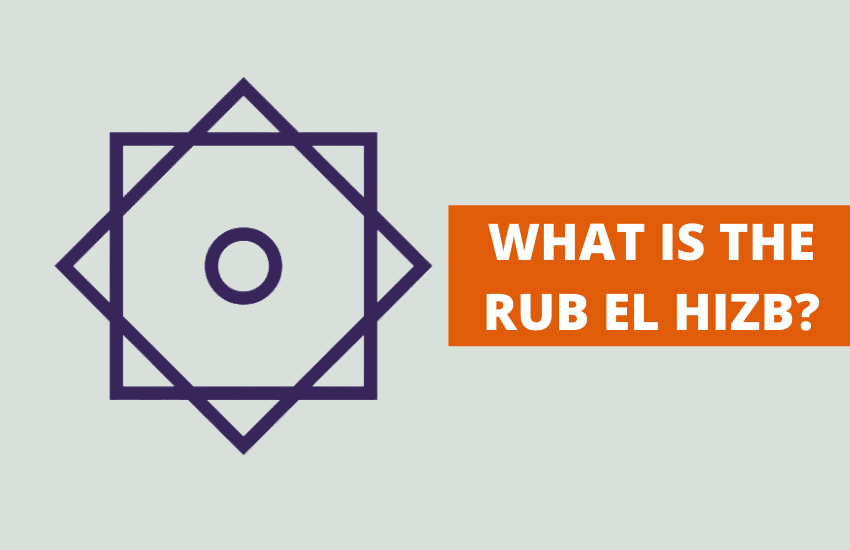
Table of Contents
The Rub El Hizb is an Islamic symbol made up of two overlapping squares, to resemble an octagram. In Arabic, the term Rub El Hizb means something that is divided into quarters, which can be seen in the image of the symbol, where the two squares have their edges portioned off.
The Rub El Hizb was used by Muslims of yesteryear for the recitation and memorization of the Quran. The symbol represents every quarter of a Hibz, which is a section in the holy Quran. This symbol also marks the end of a chapter in Arabic calligraphy.
Although Islam doesn’t permit the use of iconography and symbols, believers can use geometric shapes and designs, such as the Rub El Hibz, to convey religious concepts and beliefs.
Design and Importance of the Rub El Hizb

The Rub El Hizb is basic in its design, featuring two superimposed squares with a circle at its center. These basic geometric shapes create a more intricate eight-pointed star, with eight equal portions in the shape of triangles.
The symbol was used as a way to help with recitation of the Quran, which is an essential part of Islamic life. It was be used to divide the verses into quantifiable passages, which enabled the reader or reciter to keep track of the Hizbs. This is why the name of the symbol comes from the words Rub, which means a quarter or one-fourth, and Hizb which means a group, which together means grouped into quarters.
In the Quran, a “Hizb” corresponds to half of a Juz, which is a division of the Quran into 30 parts. The Quran contains 60 Hizbs in total. The Rub El Hizb, therefore, signifies a quarter of a Hizb, or an eighth of a Juz. This symbol serves as a marker within Quranic scriptures, indicating the conclusion of a verse. It offers a convenient way for readers to locate and remember their reading progress.
Origins of the Rub El Hibz
According to some historians, the Rub El Hizb originated in a civilization that existed in Spain. This region was ruled for a long time by Islamic kings, and it’s said that they had an eight-pointed star as their logo. This star could have been the early precursor for the Rub El Hib symbol.
Rub El Hizb Today
The Rub El Hizb has been an important symbol in several countries across the world.
- Turkmenistan and Uzbekistan use the symbol in their coat of arms.
- The Rub El Hizb is often connected to the scouts of different countries. It’s also used as a scout symbol and is the emblem of the Scout Movement of Kazakhstan, and the Iraq Boy Scouts.
- The symbol can be seen used in flags in unofficial settings. The Rub El Hizb is used as the unofficial flag of Kazakhstan. It’s the fictional flag in Indiana Jones and the Last Crusade.
- The symbol has also inspired architects and designers. There have been several iconic buildings based on the shape and structure of the Rub El Hizb, such as the Petronas Twin Towers, the interior of the Republic of Bosnia and Herzegovina, and the Octagonal buildings.
The Rub El Hizb and the al-Quds
The Rub El Hizb was adapted as the al-Quds symbol and is used in Jerusalem. It features a more floral-like design, but a closer look will show that it’s similar to the outline of the Rub El Hizb.
The al-Quds symbol was inspired by the Rub El Hizb as well as the octagonal structure of the Umayyad Dome, which was built to honor Jerusalem’s status as the first Qibla, or direction of prayer in Islam.
In Brief
The Rub El Hizb is an important symbol closely integrated with the cultural and religious life of Muslims. The symbol was particularly popular in Muslim-governed cities and provinces.








